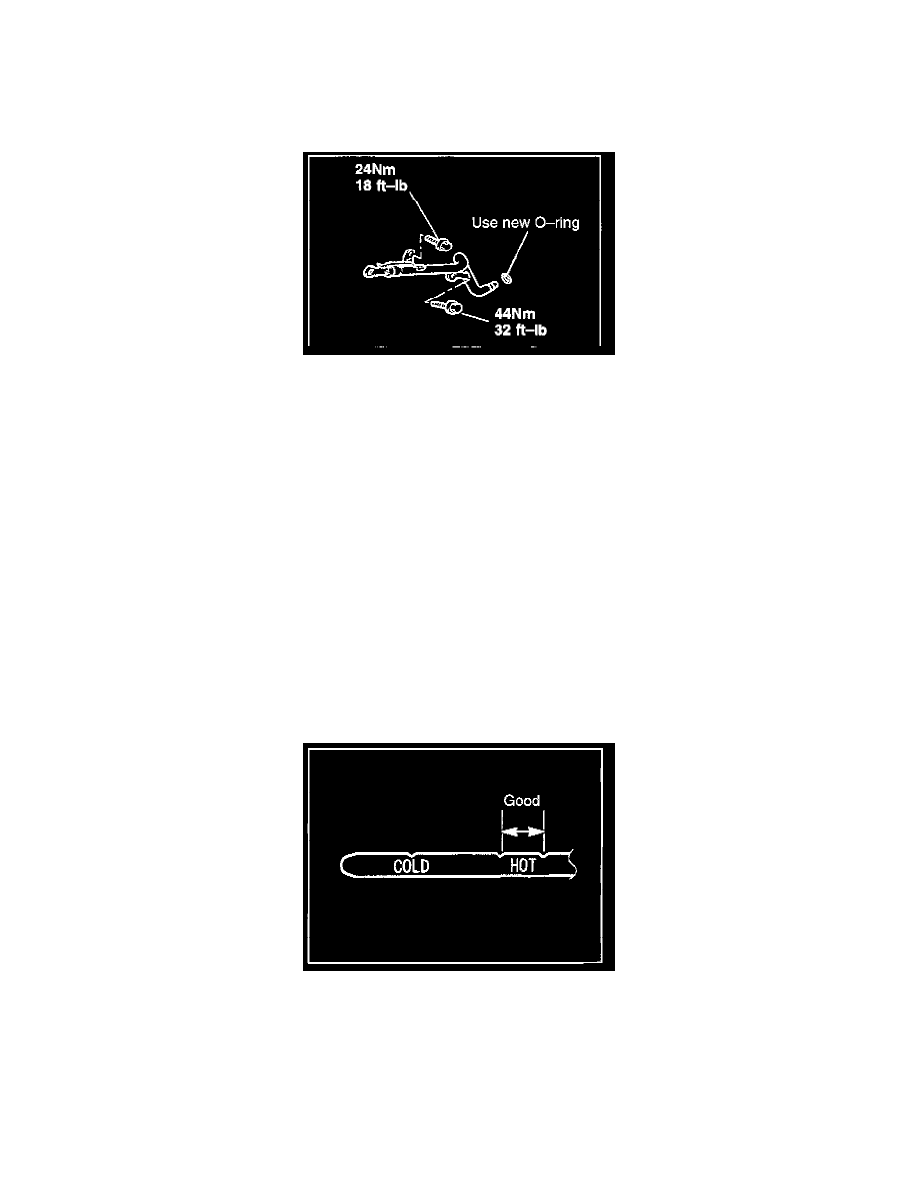Montero Sport XLS 4WD V6-3.0L SOHC (1999)

5.
Referring to section 23B in the service manual (Transmission Overhaul), clean and install the magnets, then, using Mitsubishi sealant MR166584
(or equivalent), install the new oil pan from the kit. Torque the oil illustration in Steps 3 & 4.
CAUTION
Make sure the magnets are cleaned thoroughly before reinstalling.
6.
Install the original oil level gauge/fill tube into new oil pan. Be sure a new O-ring as shown in the illustration. Torque the fill tube mounting bolts
to the correct value as shown in the illustration.
7.
CAUTION
Be sure to flush the transmission cooler tubes before filling the transmission and operating the vehicle.
Flush the cooler tubes. Refer to FLUSHING THE COOLER TUBES, in Section 23A in the service manual for complete instructions:
^
1999 Service Manual, Page 23A-155 (MEDIC Document Info. No. M2310-130-0056-01)
^
2000 Service Manual, Page 23A-159 (MEDIC Document Info. No. M2310-130-0094-01)
^
2001 Service Manual, Page 23A-347 (MEDIC Document No. not available at this time, refer to 2000 model MEDIC Document Info. No.)
8.
Add ATF. Insert the new, longer oil level gauge (dipstick) from the kit into the oil level gauge/fill tube and check the fluid level. Add more ATF if
necessary to bring the level to the full mark when COLD.
9.
Check the ATF level according to the following steps:
a.
Drive the vehicle until the fluid temperature reaches the normal operating range (70 - 80 degrees C [158 - 176 degrees F]).
NOTE:
Use the MUT-II scan tool to check the ATF temperature. Refer to page 23A-43, ATF Temperature Sensor check, in the 1999 or 2000 Montero Sport
service manual (MEDIC document Info. No. <M2310-132-0069-02).
b.
Check that the fluid level is between the "HOT" marks on the new dipstick.
1)
When the ATF level is higher than the "HOT" mark on the dipstick, the ATF can overheat during driving, resulting in transmission
damage.
2)
If the ATF level is low, hydraulic pressure in the transmission will drop, resulting in delayed shifting and slipping of the internal
clutches and brakes.
NOTE:
